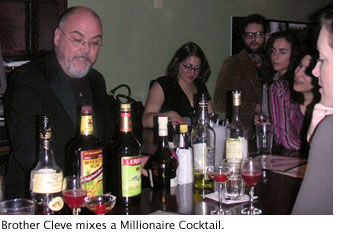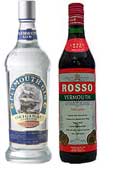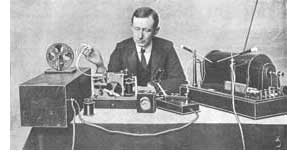Archive for the ‘Cocktails’ Category
November 17th, 2006
Does this mean war? I hope so. In Boston Magazine’s November issue, Liquids columnist Anthony Giglio throws the glove down in “The Bitters Truth.” After a somewhat systematic evaluation of cocktails in Boston and Cambridge bars, he says, “I’ve come to realize that Cambridge is to cocktails what Berkeley, California, is to food — the little city in the big city’s shadow that’s the breeding ground for creativity, integrity, and dynamism. I’ve never met so many scholarly barkeeps in my life as I have in Cambridge. And after much scholarly research of my own, I can now say with absolute certainty that Cambridge makes better cocktails than Boston.”
Of course, this isn’t exactly news to us. Many of the bars and bartenders lauded on this site for their cocktail prowess are the same that Giglio cites in his article: Green Street (where drinkboston.com recently had its launch party), which boasts three of the Boston area’s best bartenders (Dylan Black, Misty Kalkofen and Joe McGuirk); B-Side Lounge, which, as a training ground for serious barmen and women, is to the local bar scene what Harvard Law is to the U.S. Government; plus Chez Henri, the Blue Room, etc. Giglio points out that “the great Boston exceptions — John Gertsen at No. 9 Park, Jackson Cannon at Eastern Standard, Nathan Bice at Beacon Street Tavern, and John Byrd at the Alchemist — all perfected their trade in Cambridge.”
So, what is it about Cambridge that nurtures a great cocktail culture? Cheaper rents and bar ownership by individuals rather than restaurant groups or hotels mean that bars can afford to make drinks with quality ingredients and take risks like not stocking Apple Pucker; a quirky, discerning population that appreciates variety and challenges to the palate; and the community of bartenders themselves, “a tight circle of avant-garde drink experts who pass down their expertise and help aspiring mixologists start out on their own,” writes Giglio.
What all this means, I hope, is that more Boston bars will get jealous of the praise being heaped on Cambridge drinking establishments and decide to rise to the challenge of making drinks that break out of the safe, chocolate-mint-martini mold. The prospect of a Mixologist War between Boston and Cambridge should have us all salivating.
Posted in Bartenders, Booze in the news, Boston bars, Cocktails | No Comments »
November 15th, 2006

Here are the recipes for the drinks featured at drinkboston.com’s launch party, along with highly condensed versions of each bartender’s remarks about his/her drink. In order they were:
The Jack Rose (mixed by Jackson Cannon)
Some recipes call for lemon, some for lime. Applejack, a nearly forgotten spirit, is the base. Do not attempt to mix this drink without real pomegranate grenadine.
2 oz Laird’s Applejack
3/4 oz handmade grenadine (see recipe below)
1/2 oz fresh-squeezed lemon juice
one dash Peychaud’s Bitters
Shake over ice and strain, garnish with a lemon twist.
Grenadine: 2 parts pomegranate juice, 1 part cane sugar. Bring to boil, reduce heat and simmer to thicken slightly. Remove from heat and finish with a touch of orange flower water. Let chill, store in refrigerator.
The Sazerac (mixed by John Gertsen)
Born of the mishmash of New Orleans culture in the early to mid-1800s and believed by many to be the first cocktail. Antoine Peychaud was an apothecary whose proprietary blend of medicinal bitters was mixed with cognac before rye became the preference (rye was America’s whiskey before bourbon became more popular).
1 sugar cube (4-7 grams)
7 dashes Peychaud’s Bitters
1 oz water
3 oz Sazerac rye whiskey
A few drops of Herbsaint (pastis)
Muddle first three ingredients in mixing glass. “Rinse” a pre-chilled, old-fashioned glass with Herbsaint (pour drops of Herbsaint into glass, swirl and discard). Add rye to mixing glass and fill with ice. Stir well for 30 seconds and strain into Herbsaint-rinsed glass. Squeeze lemon twist over glass and rub around rim. Discard peel.
The Widow’s Kiss (mixed by Misty Kalkofen)
Drinks like this fell out of favor as people’s tastes moved to fruit-flavored liqueurs rather than “scary” herbal liqueurs like Chartreuse and Benedictine. There’s no real story behind this drink (it probably originated in 1895). Let’s make one up!
1 & 1/2 oz Calvados
3/4 oz Benedictine
3/4 oz yellow Chartreuse
2 dashes Angostura Bitters
Stir. Strain. Garnish with a cherry.
The Millionaire Cocktail (mixed by Brother Cleve)
This is but one of several widely varying drink recipes that go by the name “Millionaire.” It appears in Vintage Spirits & Forgotten Cocktails, by Ted Haigh (aka Dr. Cocktail).
1 & 1/2 oz Myer’s Original Dark Rum
3/4 oz apricot brandy
3/4 oz sloe gin
juice of one fresh lime (about 1 oz)
Shake well in an iced shaker. Strain into cocktail glass. Garnish with lime.
Posted in Applejack, Calvados, Cocktails, Events, Liqueur, Rum, Whiskey | 2 Comments »
November 5th, 2006
 Experimentation can be a tough thing to do at a neighborhood bar, but Jess Willis, the general manager of the Independent (75 Union Sq. Somerville), has boldly ventured backward in time to create the Indo’s current cocktail menu. She put the Fitzgerald, the Brandy Alexander and the Algonquin on there. Then she dug deep into the vault and dusted off the Gin and It. Praise the lord.
Experimentation can be a tough thing to do at a neighborhood bar, but Jess Willis, the general manager of the Independent (75 Union Sq. Somerville), has boldly ventured backward in time to create the Indo’s current cocktail menu. She put the Fitzgerald, the Brandy Alexander and the Algonquin on there. Then she dug deep into the vault and dusted off the Gin and It. Praise the lord.
This is one weird cocktail by the standards of the contemporary world, where anyone who orders a Martini expects a mixture of about 50 parts gin or vodka to one part dry (white) vermouth. Well, get this: the Gin and It calls for sweet (red) vermouth, and lots of it. (Vermouth is red or white wine flavored with herbs and spices, lightly fortified with grain neutral spirit and, in the case of red vermouth, lightly sweetened.) The recipe in Dale DeGroff’s book The Craft of the Cocktail consists of equal parts (1.5 ounces each) gin and sweet vermouth, plus a dash of Angostura bitters and an orange peel. DeGroff explains: “The Gin and It was actually ordered in the Hoffman House and other New York bars of the 1880s and ’90s, simply as a Sweet Martini, and later as a Gin and Italian. During Prohibition, Gin and Italian was shortened to Gin and It.”
A brief web search turned up recipes for the drink varying from the half-and-half version above to two parts gin, one part sweet (Italian) vermouth. But Jess decided to trick her version out with three parts vermouth to one part gin. Eeewww, you’re saying. That’s because vermouth has unfairly come to be viewed as a necessary evil to be administered only by the nano-liter so that people can claim they’re drinking, say, a Manhattan instead of a chilled whiskey with a cherry. The fact is, without vermouth, the “cocktail” would not exist. It’s an ingredient as essential to the pantheon of mixed drinks as bitters and spirits. The Indo’s Gin and It, which also benefits from a dash of orange bitters, is tasty proof of this. Check it out for $8.
Posted in Boston bars, Cocktails, Gin, Vermouth | No Comments »
October 24th, 2006

If you’re planning on turning to alcohol to help decision-making in the voting booth this Election Day, go out and order yourself a cocktail that was invented in Boston for just that reason: the Ward Eight (whiskey, lemon juice and a bit of sugar and grenadine). If you want to be really authentic, you can order this cocktail at Locke-Ober (3 Winter Place near Downtown Crossing), where it was invented circa 1898. According to cocktail historians Gary and Mardee Regan, the Ward Eight was created the day, ahem, before the election to celebrate the apparently forgone victory of influential Boston pol Martin M. Lomasney, aka “the Czar of Ward Eight,” in the race for the state legislature. The earliest recipe for the drink calls for a splash of OJ, but most cocktail enthusiasts think that’s a bad idea and stick to the less sweet, simpler version. Anthony Giglio wrote an intriguing Boston Magazine article earlier this year about the “great Ward Eight debate” that a group of local bartenders and cocktail aficionados had about the origins of the drink.
The Ward Eight is extra tasty with real grenadine syrup (made from pomegranate juice, sugar and a dash of orange flower water), which you can find at some of Boston’s best bars, including B-Side Lounge, Eastern Standard, Green Street and No. 9 Park.
Posted in Cocktails, Whiskey | 1 Comment »
October 17th, 2006
 There are a million old cocktail recipes out there. Sometimes, you’ll stumble upon one that’s really intriguing, as I did recently with the Marconi Wireless. It’s not only tasty, it’s got all sorts of cool historical and cultural connections.
There are a million old cocktail recipes out there. Sometimes, you’ll stumble upon one that’s really intriguing, as I did recently with the Marconi Wireless. It’s not only tasty, it’s got all sorts of cool historical and cultural connections.
I was flipping through a 1957 paperback that my significant other, Scott, picked up at a flea market recently: The Art of Mixing Drinks (“Based on the famous Esquire Drink Book” exclaims the book’s cover). I was looking for a recipe using applejack; luckily the book has an entire section on applejack cocktails. The Marconi Wireless caught my eye: 2/3 applejack, 1/3 Italian vermouth, 2 dashes orange bitters. ‘Hmm, I bet that’s good. And it’s so simple!’ I thought. Sure enough, it was a snappy, satisfying drink, and we had to find out more about it.
Part of our excitement about the Marconi Wireless had to do with the fact that we visit Wellfleet, Cape Cod frequently and always pass Marconi Beach, the stretch of sand where Guglielmo Marconi transmitted the first transatlantic wireless message from the U.S. in 1903. Cocktails, Wellfleet, historic events — that combination jazzed us. We thought, ‘Man, every bar in Wellfleet should be serving Marconi Wirelesses!’
With a little digging, we found a 1992 New York Times article that William Grimes wrote on historic New York City hotel bars. It turns out that the Marconi Wireless was among several potions invented at the Waldorf-Astoria, and it is listed in the Old Waldorf-Astoria Bar Book. When was the cocktail invented? Perhaps when Marconi was feted by the American Institute of Electrical Engineers at the Waldorf in 1902 for his role in pioneering radio communication. Or maybe later, in 1912, when Marconi gave testimony at the Senate hearings at the Waldorf on the Titanic disaster. One of the things he was questioned about was how Marconi Company wireless operators who survived the wreck came to receive payment from the New York Times for their stories. In 1902, the cocktail would be an homage. In 1912, a jeer. Thoughts, anyone?
Fun sidebar: our research also led us to the term “cocktail party effect.” The term emerged in the early days of air traffic control, when the difficulty of discerning the intermixed voices of pilots over one loudspeaker was compared to that of zeroing in on one conversation amid the loud chatter of a cocktail party.
Posted in Applejack, Cocktails | 2 Comments »

 Experimentation can be a tough thing to do at a neighborhood bar, but Jess Willis, the general manager of the
Experimentation can be a tough thing to do at a neighborhood bar, but Jess Willis, the general manager of the 
 There are a million old cocktail recipes out there. Sometimes, you’ll stumble upon one that’s really intriguing, as I did recently with the
There are a million old cocktail recipes out there. Sometimes, you’ll stumble upon one that’s really intriguing, as I did recently with the 